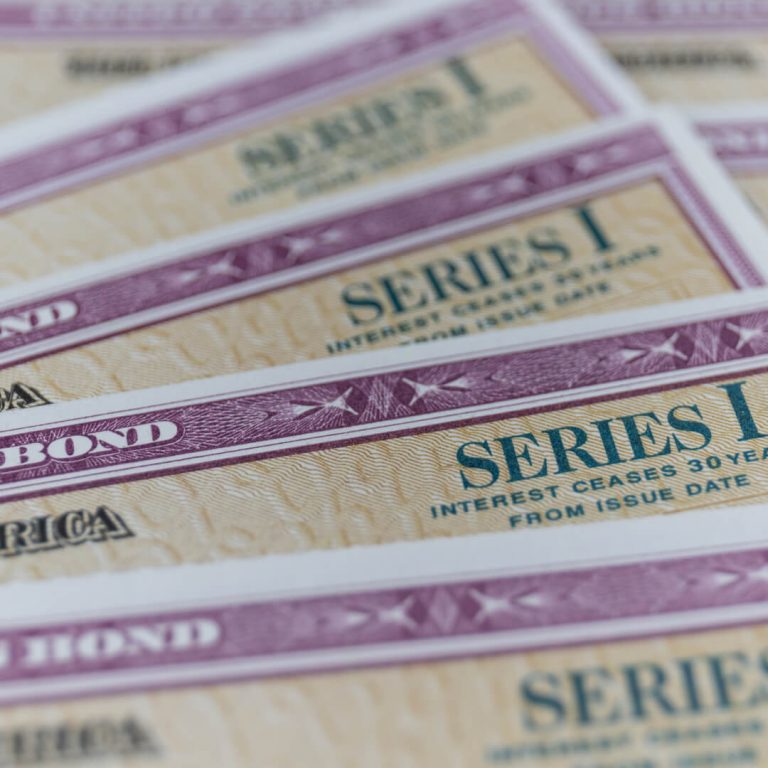Financial experts say not to put all your eggs in one basket. Instead, they recommend a balanced, diversified portfolio because it lowers the chance that any particular investment type could wipe out the entire value of your savings due to factors beyond your control. Because let’s face it, the stock market doesn’t always go up and inflation—a rapid rise in the cost of everyday goods that reduces the purchasing power of your money—does happen.
I Bonds, which drew a lot of attention in 2022 due to their high interest rate (9.62% in July) but have since cooled (4.30% as of May 1, 2023), can be a way to create balance in your portfolio and protect it against inflation.
What are I Bonds?
I Bonds are Treasury savings bonds issued by the United States government. Similar to EE and HH Savings Bonds, I Bonds allow you to loan the government money in exchange for the interest you’ll earn on the bonds until they mature in 30 years. The Treasury first issued I Bonds in 1998 specifically to provide investors a way to protect their savings from the sting of inflation. Hence, the I in I Bonds.
How do I Bonds work?
The cost of an I Bond is its face value, which you can’t lose because it’s backed by the full faith and credit of the U.S. government. If you buy a $5,000 I Bond, it’s worth $5,000 plus whatever interest it earns up to its maturity date, at which point it stops earning interest.
An I Bond’s total (or composite) interest rate, which compounds semi-annually, includes two parts: a fixed rate and an inflation interest rate. The latter is based on the Consumer Price Index (CPI), which measures the average change in the prices of consumer goods and services over time. The Treasury sets its I Bond fixed and inflation rates every six months on the first business day of May and November.
Whatever the fixed interest rate is when you buy an I Bond remains your fixed rate throughout your ownership. The inflation rate at the time of your I Bond purchase is good for the ensuing six months, after which it will continue to adjust to the Treasury’s latest inflation rate at six-month intervals until the bond matures.
For example, if you buy an I Bond on August 15 for $5,000, it will earn the inflation interest rate that was set by the Treasury at the beginning of the previous May until the following January 31, when the interest you earned in those six months will be added to your $5,000. As of February 1, your adjusted balance will begin earning the new inflation interest rate that was set at the beginning of the previous November until the following July 31.
Who’s eligible to buy I Bonds?
Anyone who has a social security number and falls into one of these categories can buy an I Bond:
- U.S. citizens living in the United States
- U.S. residents
- Civilian employees of the U.S. government, no matter where they live
How do you buy I Bonds?
First, you need to open an account on TreasuryDirect as follows:
- Choose the individual account
- Fill in your personal information, which includes your social security number, physical and email addresses, phone number, and bank account and routing numbers.
- Review your information.
- Choose your security credentials, which includes an image, an image caption, a password, a password reminder and three security questions.
Once you submit your application, the Treasury will send you an email with your account number to use to log in to your new account at TreasuryDirect. From there, you can buy an electronic I Bond and track its earnings as long as you hold it.
There’s no fee to buy an electronic I Bond. The minimum purchase amount is $25 and the maximum is $10,000 per year. You also have the option of buying up to $5,000 more per year in paper I Bonds if you’re using your federal tax return for the purchase. You can give an I Bond to someone, such as your child, without it counting toward your annual limit. But any I Bond gift that you receive from someone else does count toward it.
Can you cash out an I Bond before it matures?
For the first year that you own an I Bond, you can’t redeem it for cash. After that you can cash out all or part of it through your TreasuryDirect account. Just keep in mind that if you cash out your I Bond within the first five years of ownership, there is a penalty, which amounts to the last three months of interest earned on the bond.
The primary benefits of I Bonds
As you work to create an age-appropriate portfolio that is balanced with a diversified mix of stocks, bonds and cash assets, such as term or savings accounts, I Bonds can play a key role because of these benefits:
- Inflation protection
- Full backing of the U.S. government
- Attractive interest rates for such a safe investment
- Guaranteed protection of your principal and earned interest
Moreover, you don’t pay any state or local income tax on the interest earned on I Bonds, and you can defer federal income tax on them until they’re redeemed or they mature, whichever comes first.
Editor’s note: Quorum is not affiliated with any of the companies mentioned in this article and derives no benefit from these businesses for placement in this article.






Comments Section
Please note: Comments are not monitored for member servicing inquiries and will not be published. If you have a question or comment about a Quorum product or account, please visit quorumfcu.org to submit a query with our Member Service Team. Thank you.